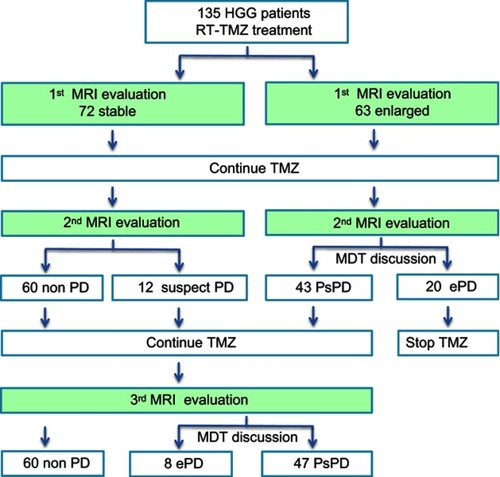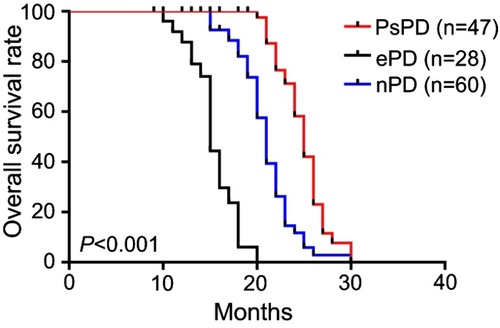Figures & data
Table 1 Association between clinicopathological variables of patients and PsPD and ePD
Figure 1 MRI findings and outcomes of patients.
Abbreviations: MRI, magnetic; resonance imaging; HCGs, high-grade gliomas; TMZ, temozolomide; RT-TMZ, radiotherapy Concurrent TMZ chemotherapy; PD, disease progression; PsPD, pseudoprogression; ePD, early disease progression; MDT, multidisciplinary team.

Figure 2 Overall survival for pseudoprogression, early disease progression and neither pseudoprogression nor early disease progression.

Figure 4 Overall survival for increased and no increased NLR.
Abbreviation: NLR, neutrophil–lymphocyte ratio.

Figure 5 Overall survival for decreased and no decreased NLR.
Abbreviation: NLR, neutrophil–lymphocyte ratio.

Table 2 Univariate and multivariate logistic regression analyses for overall survival of high-grade glioma patients

